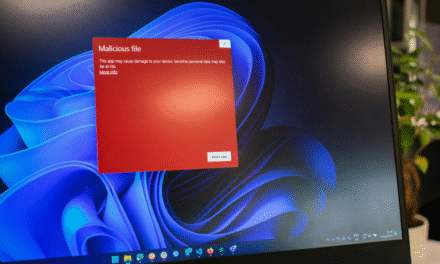Ransomware-as-a-Service (RaaS) is changing cybercrime by professionalizing and scaling the deployment of ransomware, transforming it from a niche, high-skill attack into a widespread criminal industry with a franchise-like business model. This has dramatically lowered the barrier to entry, allowing less-skilled criminals to launch devastating attacks.
As of September 2, 2025, the RaaS model is the dominant force behind the global ransomware epidemic, making it one of the most significant threats to businesses here in Rawalpindi and across Pakistan.
The “Franchise” Model of Cybercrime
Ransomware-as-a-Service is a sinister mirror image of the legitimate Software-as-a-Service (SaaS) industry. It operates like a criminal franchise.
- The Franchisor (The RaaS Operators): A core group of highly skilled developers creates a sophisticated strain of ransomware and a user-friendly web portal to manage it.
- The Franchisee (The Affiliates): The RaaS operators then recruit other, less technically skilled criminals, known as “affiliates,” to actually carry out the attacks.
The affiliate is given access to the RaaS portal, where they can generate their own customized version of the malware and monitor their campaigns. They are responsible for gaining access to a victim’s network and deploying the ransomware.
This model operates on a profit-sharing basis. When a victim pays the ransom, the cryptocurrency is automatically split, with the affiliate keeping the lion’s share (typically 70-80%) and the RaaS operator taking the rest.
The Key Players in the RaaS Ecosystem
The RaaS model has created a specialized, underground economy with distinct roles.
- The Developers: The elite coders who create and maintain the ransomware.
- The Affiliates: The “foot soldiers” who carry out the attacks.
- The Initial Access Brokers (IABs): A critical third party. IABs are hackers who specialize only in breaching corporate networks. They then sell this access (e.g., a valid VPN password) on the Dark Web for a flat fee to ransomware affiliates, who then use that access to launch their attack.
The Impact: How RaaS Has Changed the Game
The RaaS model has been a game-changer for several reasons, leading to an explosion in the number of ransomware attacks.
- Lowered Barrier to Entry: You no longer need to be a master coder to be a ransomware attacker. With a RaaS kit, anyone with basic IT skills and some cryptocurrency can launch a sophisticated attack. This has “democratized” cybercrime, dramatically increasing the number of threat actors.
- Increased Volume and Pace of Attacks: By outsourcing the attacks to hundreds of affiliates, RaaS operators can launch a far greater number of campaigns simultaneously than they could on their own.
- Fostered Innovation: The intense competition between different RaaS gangs drives them to constantly innovate, adding new features to their malware (like “double extortion” data theft) and providing better “customer support” to their affiliates to attract the best talent.
The Challenge for Defenders
The RaaS model makes defending against ransomware much more difficult.
- A Diverse Set of Attackers: Instead of trying to track one single hacking group, security teams now face a diverse and unpredictable array of affiliates, each using slightly different tactics to gain entry.
- Professionalization: The RaaS model is a business, not a hobby. These groups are well-organized, well-funded, and highly motivated, making them a formidable and persistent adversary for businesses in Pakistan and around the world.





